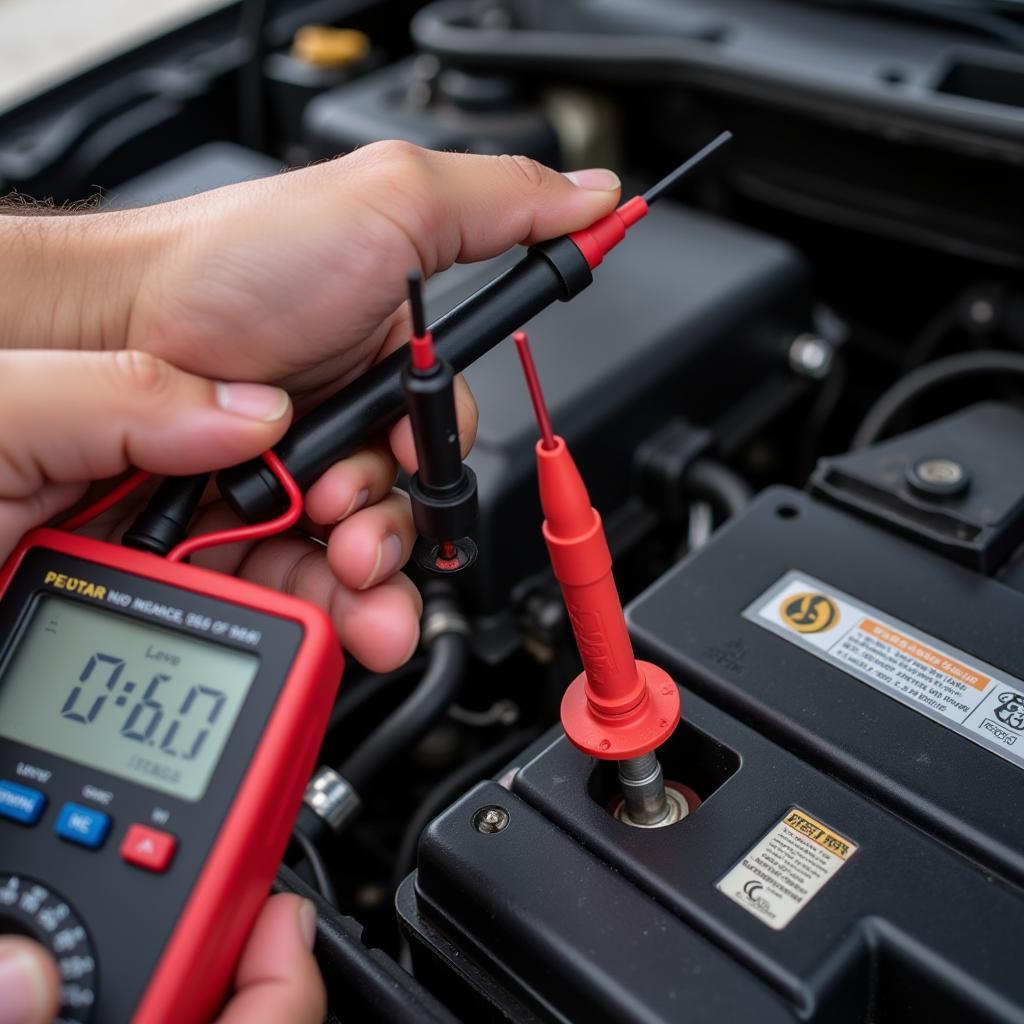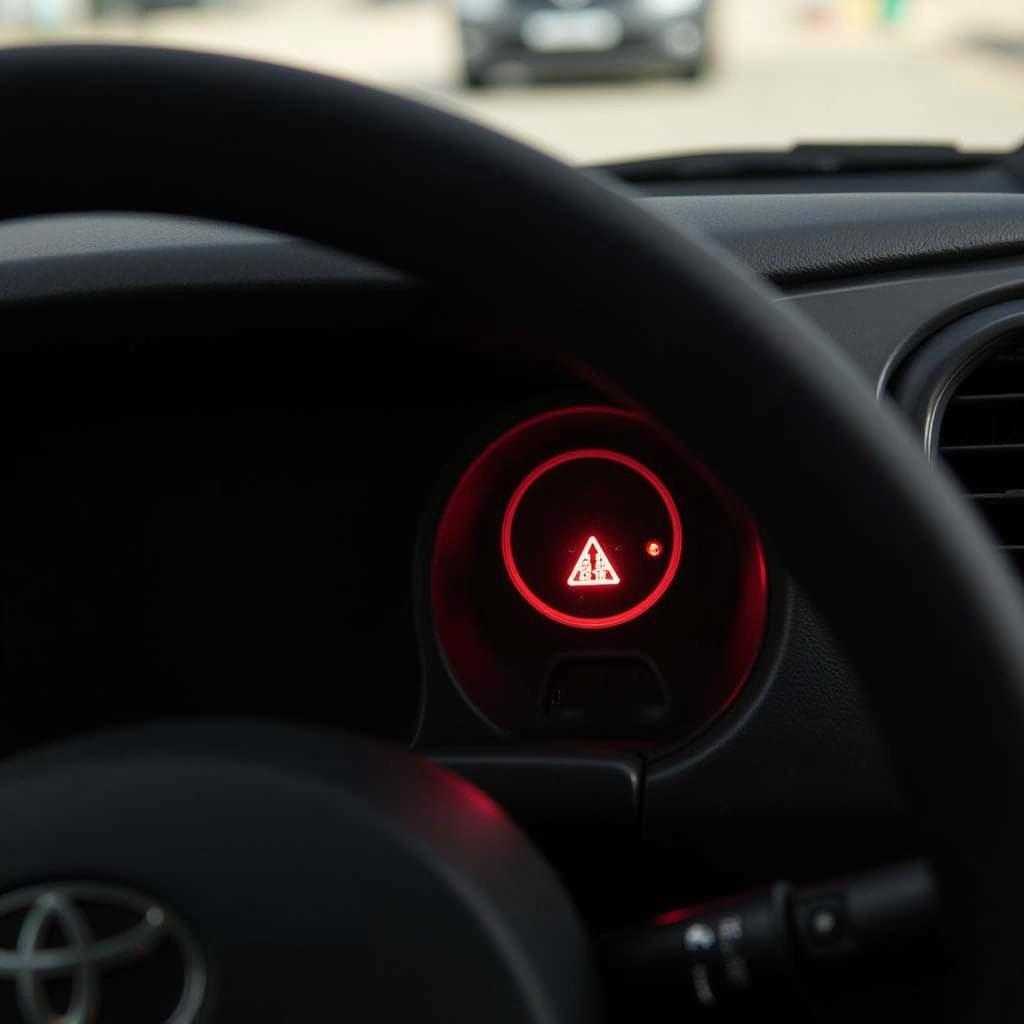Jumping a dead battery is a common roadside woe, but tackling a very dead battery requires a bit more finesse. We’ll guide you through the process, covering everything from diagnosing the problem to safely jump-starting your vehicle and preventing future battery failures. Let’s get you back on the road! If you think your car battery is dead, you can find out more here: i think my car battery is dead.
Is Your Battery Truly Dead?
Before you haul out the jumper cables, confirm your battery is the culprit. Dim headlights, a clicking sound when you turn the key, or a completely unresponsive car are all telltale signs. However, a very dead battery might not even produce these symptoms. Use a multimeter to check the voltage; a reading below 12.4 volts indicates a problem. You might need to know how to check if a battery is dead which you can find out here: check if a battery is dead.
Checking the Battery Voltage
Set your multimeter to DC volts and touch the red probe to the positive (+) terminal and the black probe to the negative (-) terminal. A very dead battery will likely read significantly lower than 12 volts, sometimes even zero.
 Checking a Very Dead Car Battery with Multimeter
Checking a Very Dead Car Battery with Multimeter
Gathering Your Tools for Jumping a Very Dead Battery
Jumping a very dead battery necessitates the right tools and precautions. Standard jumper cables are essential, but having safety glasses and gloves is also highly recommended. In cases of severely depleted batteries, a battery charger might be necessary before attempting a jump.
Essential Equipment
- Jumper Cables: Choose a quality set with heavy-gauge wires and strong clamps.
- Safety Glasses and Gloves: Protect yourself from sparks and acid.
- Battery Charger (Optional but Recommended): For very dead batteries, a slow charge can often revive them enough for a jump.
How to Safely Jump a Very Dead Battery
Safety first! Park the donor car close enough for the cables to reach, but ensure the vehicles aren’t touching. Turn off both engines and engage the parking brakes. If you are experiencing battery low start engine issues, you can learn more about it here: battery low start engine.
Connecting the Cables
- Red to Dead: Connect the red clamp to the positive (+) terminal of the dead battery.
- Red to Donor: Connect the other red clamp to the positive (+) terminal of the donor battery.
- Black to Donor: Connect the black clamp to the negative (-) terminal of the donor battery.
- Black to Ground: Connect the other black clamp to a clean, unpainted metal surface on the dead car’s engine block or chassis, away from the battery.
Starting the Engines
Start the donor car and let it run for a few minutes. Then, try starting the car with the dead battery. If it doesn’t start immediately, let the donor car run for a few more minutes and try again.
Disconnecting the Cables
Once the dead car starts, remove the cables in the reverse order of connection: black from ground, black from donor, red from donor, red from dead.
“When dealing with a very dead battery, patience is key,” advises John Smith, ASE Certified Master Technician. “A slow, steady charge is sometimes more effective than an immediate jump.”
Preventing Future Battery Drain
A dead battery isn’t just an inconvenience; it can also be a symptom of a larger problem. After getting your car started, it’s crucial to identify the underlying cause of the battery drain.
Common Culprits
- Parasitic Draw: Electronic components continuing to draw power even when the car is off.
- Faulty Alternator: The alternator isn’t charging the battery properly while driving.
- Old Age: Batteries have a limited lifespan and naturally degrade over time.
- Extreme Temperatures: Both extreme heat and cold can shorten a battery’s life. If you own a 2016 Lincoln MKX and are experiencing a dead battery you can find some helpful information here: 2016 lincoln mkx dead battery.
“Don’t just treat the symptom; find the cause,” says Jane Doe, Electrical Systems Engineer at AutoTech Solutions. “Addressing the underlying issue prevents future headaches and costly repairs.” Some vehicles like the Chrysler 200 are known to have battery issues. Learn more about it here: chrysler 200 battery issues.
Conclusion
Jumping a very dead battery requires a little more care and attention than a typical jump-start. By following the proper procedures and taking necessary precautions, you can safely revive your vehicle and prevent future battery troubles. Remember to identify and address the root cause of the dead battery to avoid finding yourself stranded again.
FAQ
- How long should I let the donor car run before attempting to start the dead car? A few minutes is usually sufficient, but for a very dead battery, you might need to let it run longer.
- What if the car still doesn’t start after jumping? The battery may be too far gone, or there might be another issue with the car. Consider calling a professional mechanic.
- Is it safe to jump-start a car with a very dead battery? Yes, as long as you follow the safety precautions outlined above.
- Can a very dead battery be recharged? Sometimes, but if it’s been deeply discharged repeatedly, it may be permanently damaged.
- How can I prevent my battery from dying in the future? Regularly check your battery’s health, ensure your alternator is functioning correctly, and minimize parasitic draw.
- What are signs of a bad alternator? Dim headlights, flickering dashboard lights, and a whining sound from the engine compartment can all indicate a faulty alternator.
- How often should I replace my car battery? Most car batteries last 3-5 years, but extreme temperatures can shorten their lifespan.


